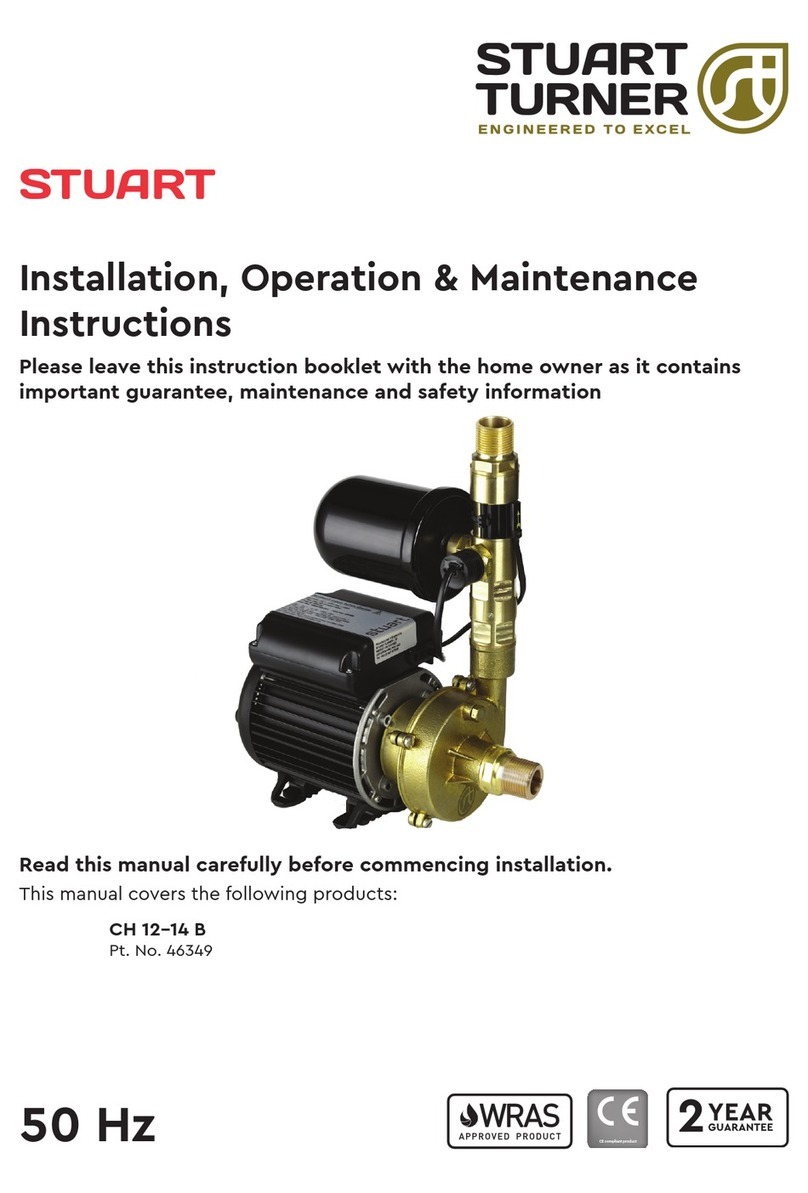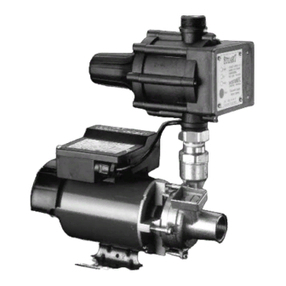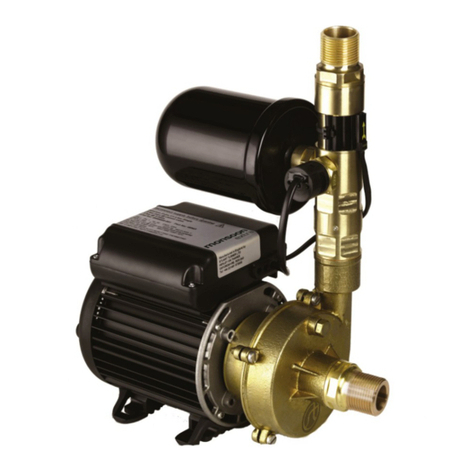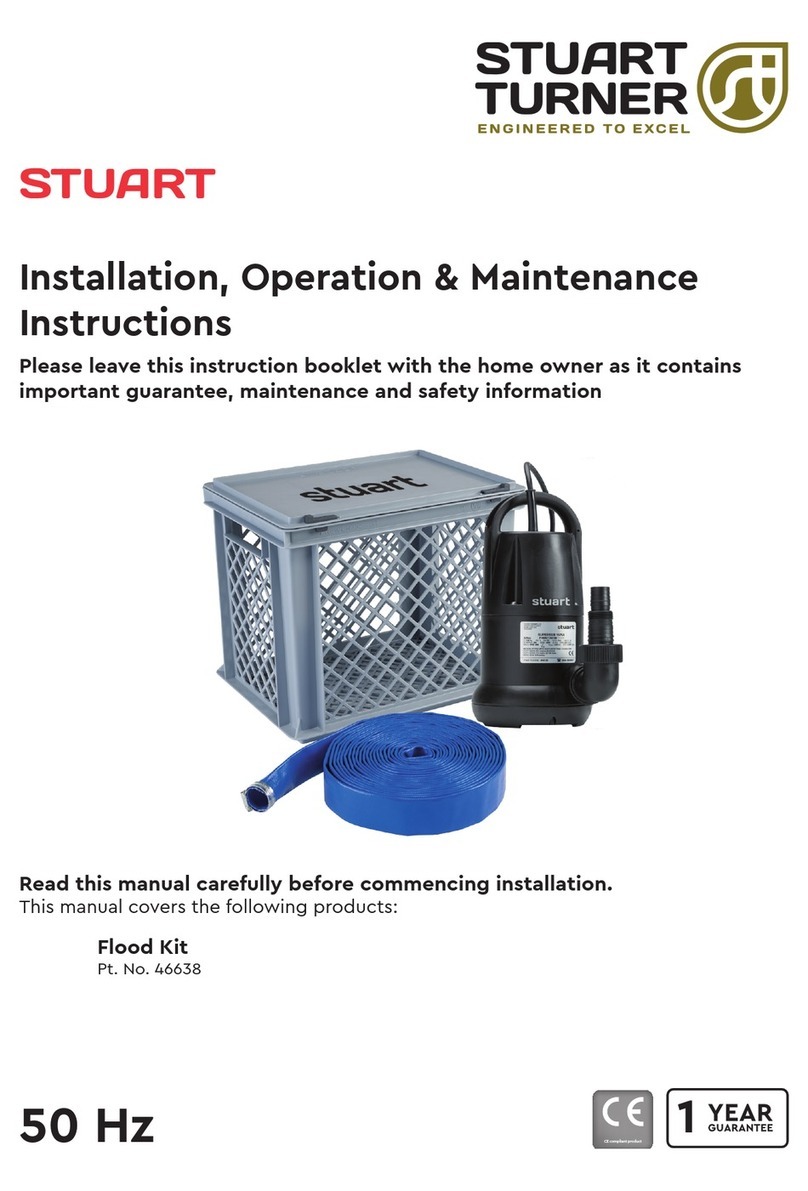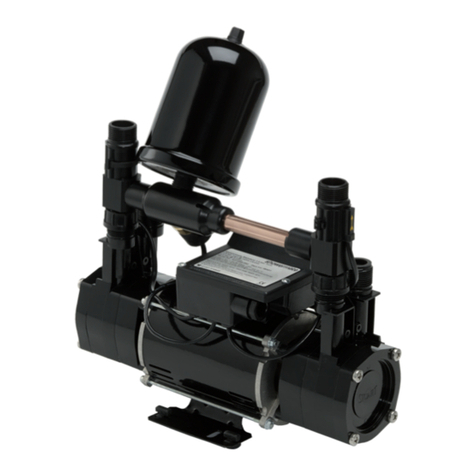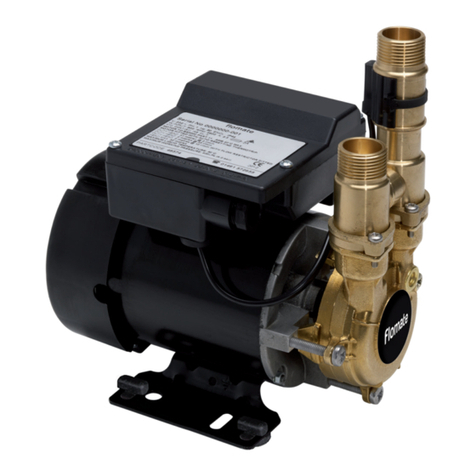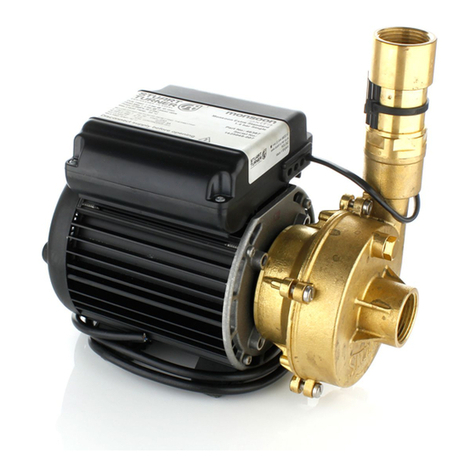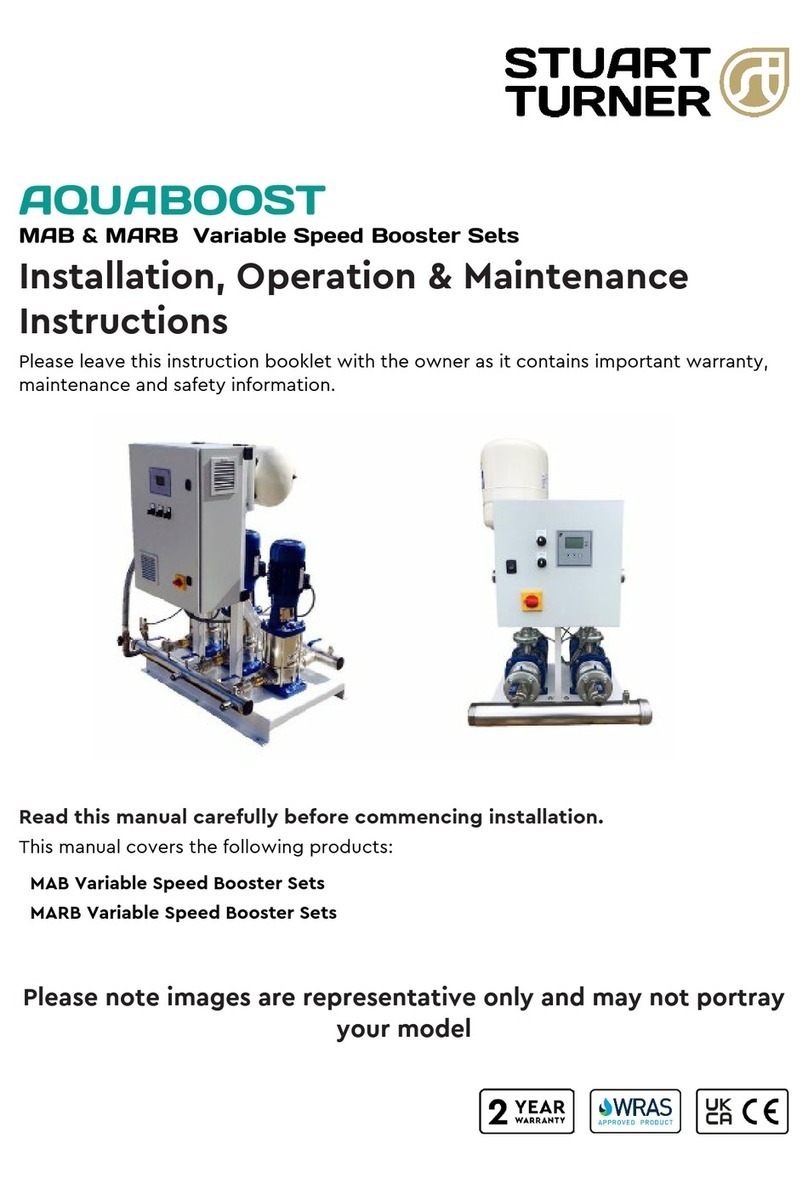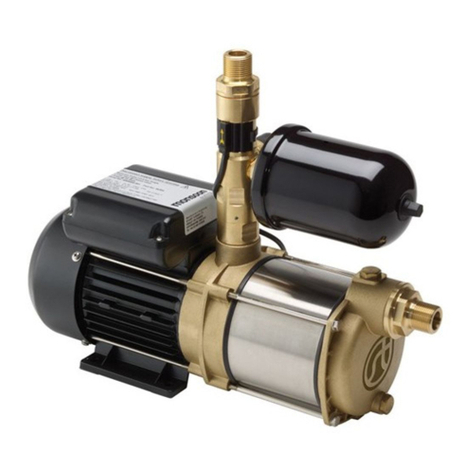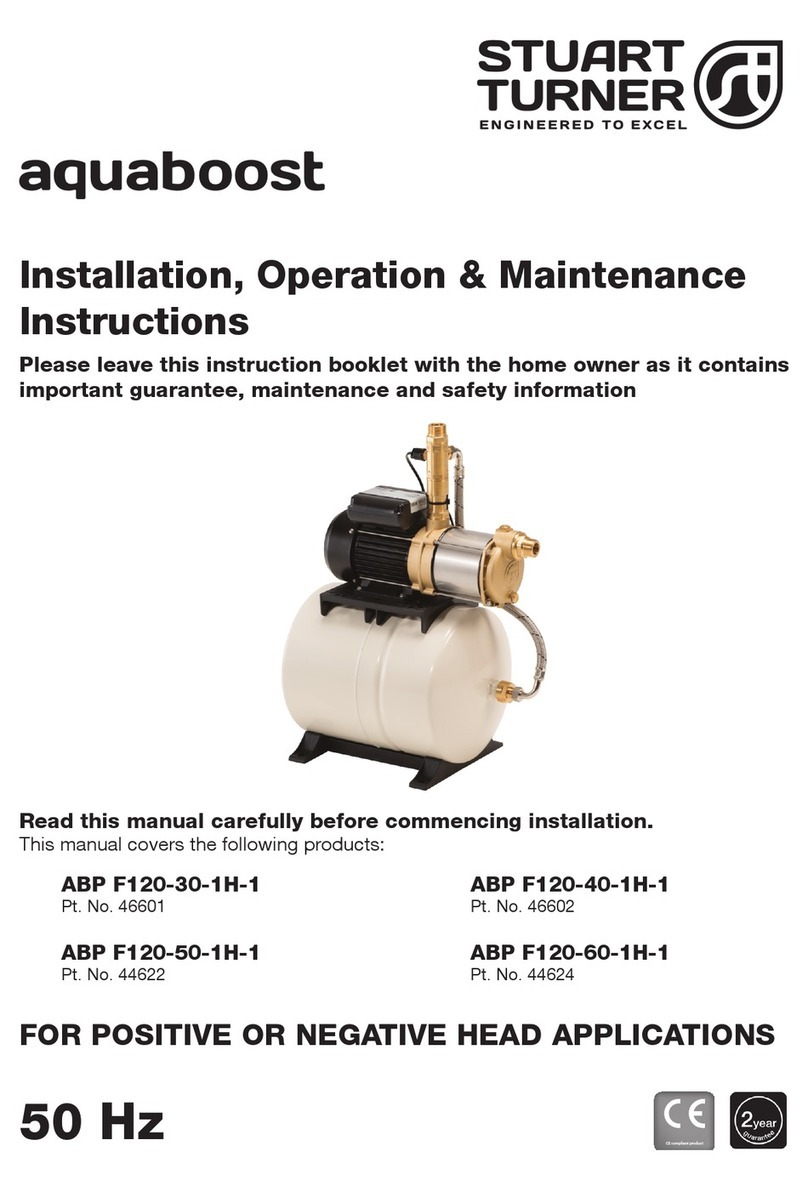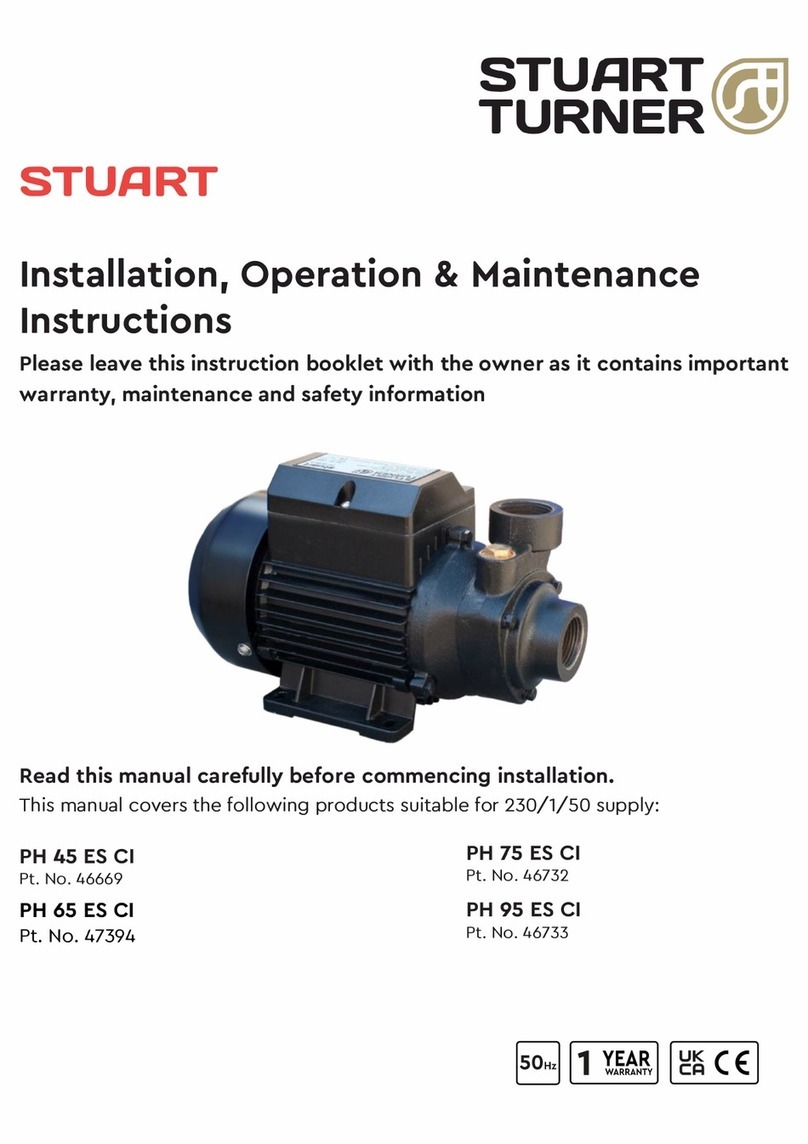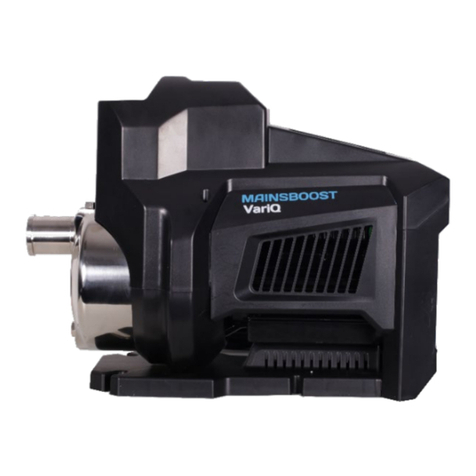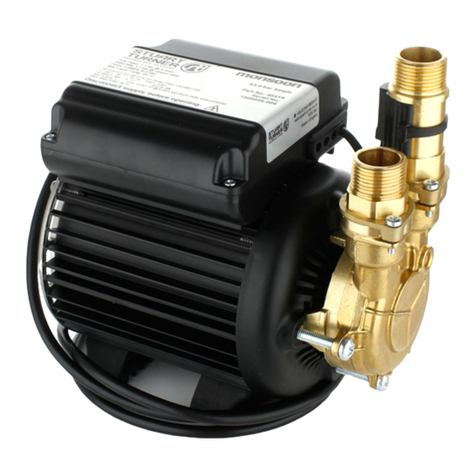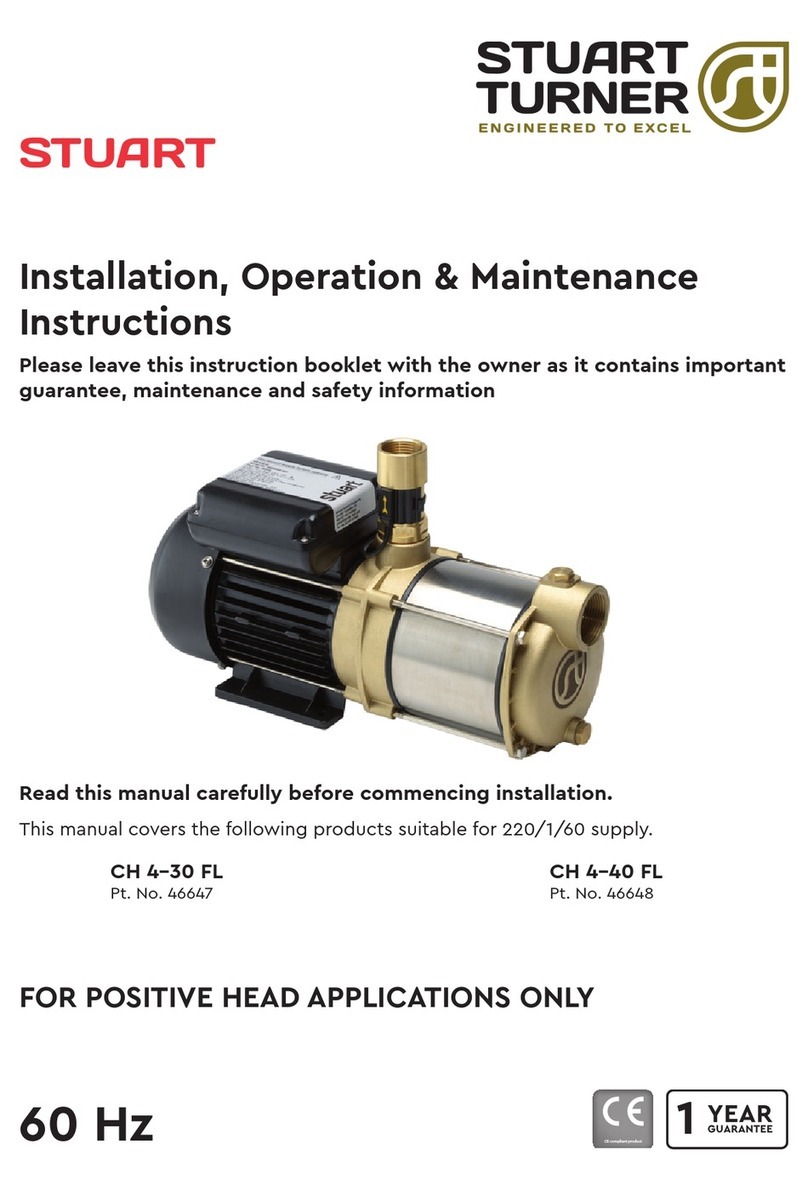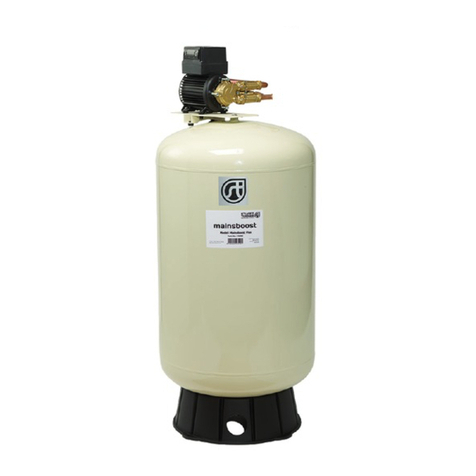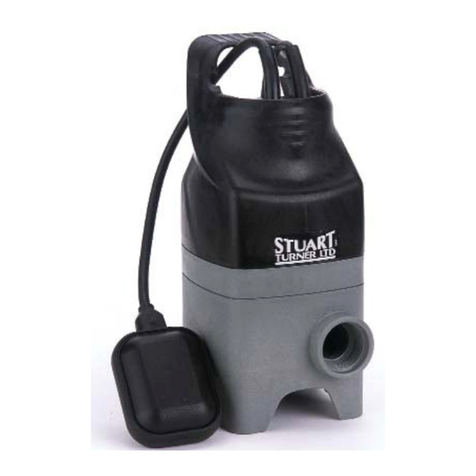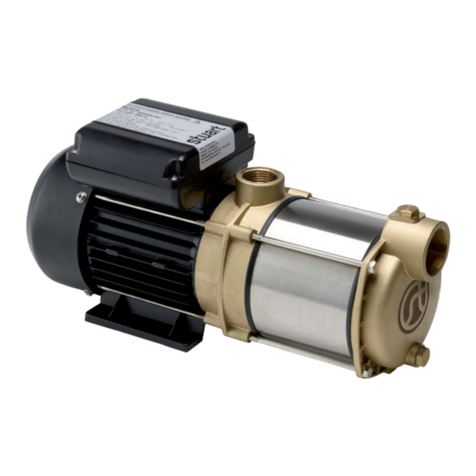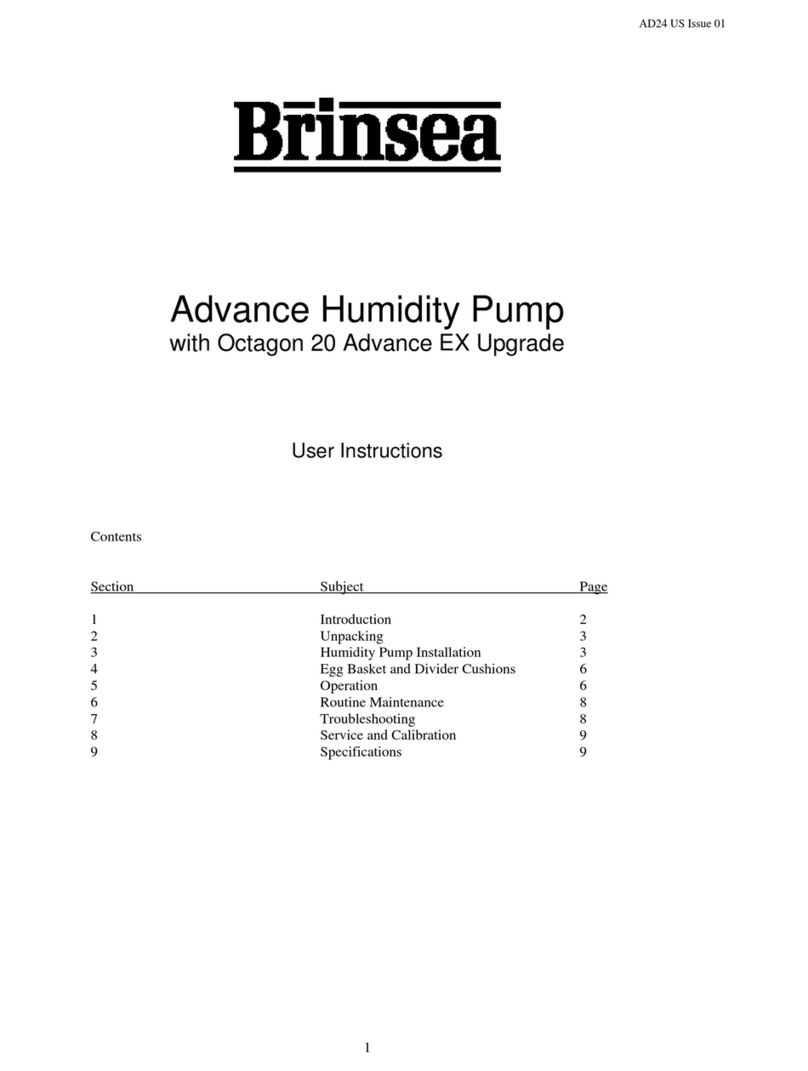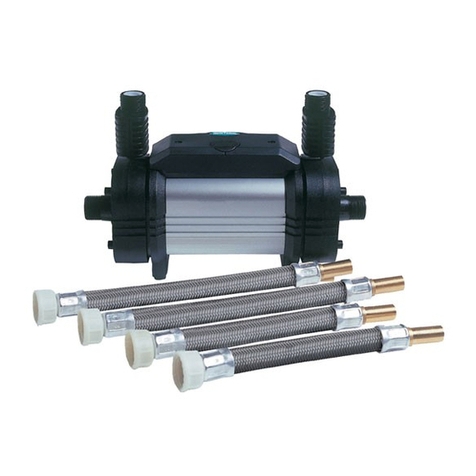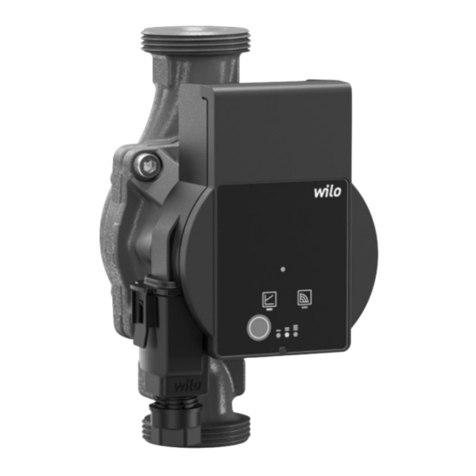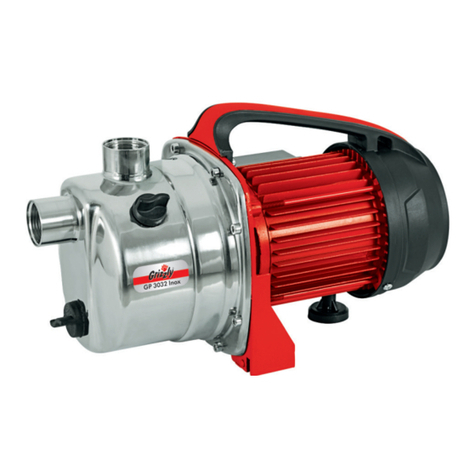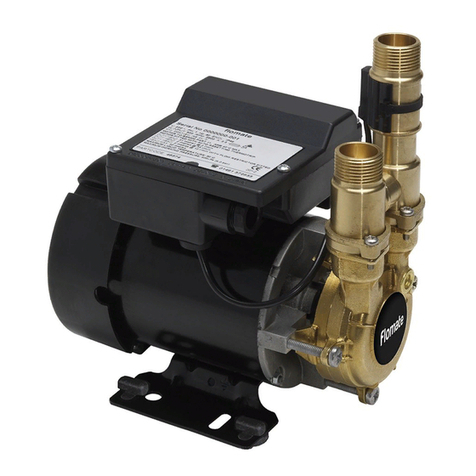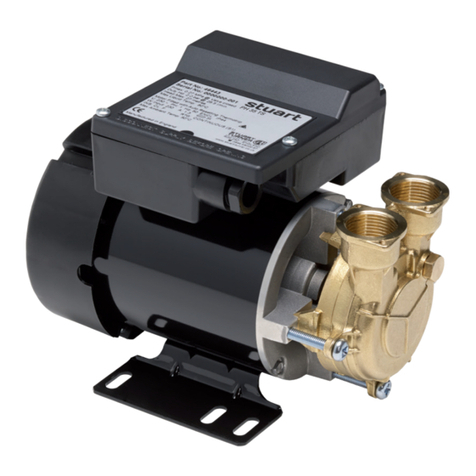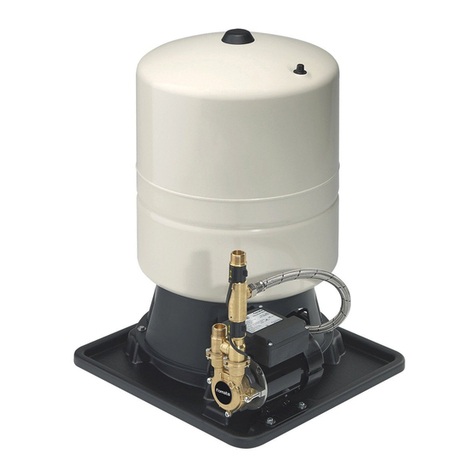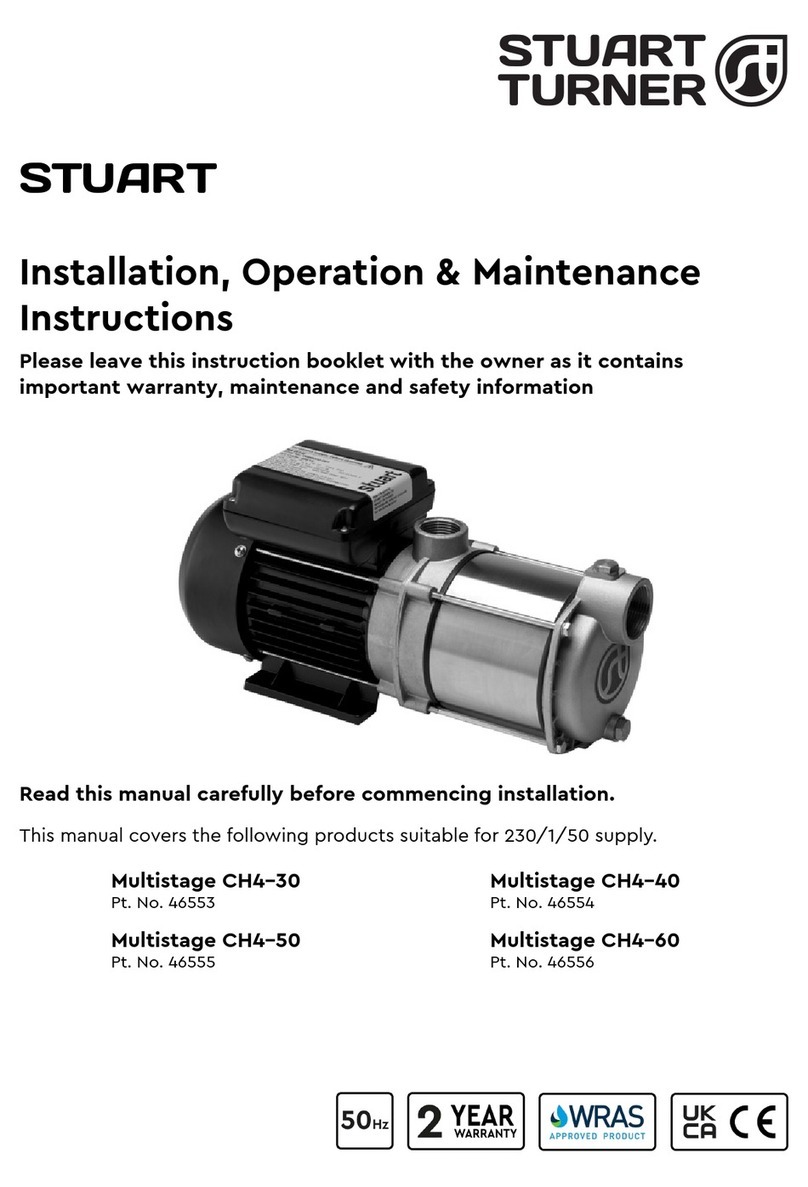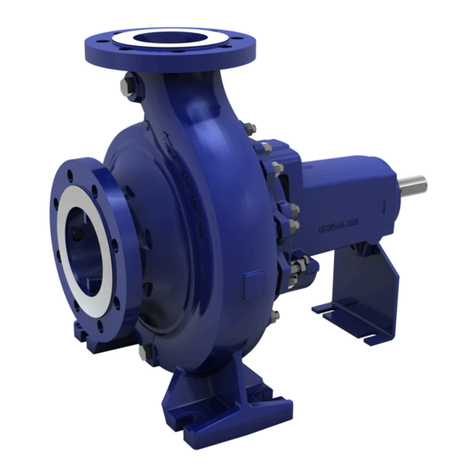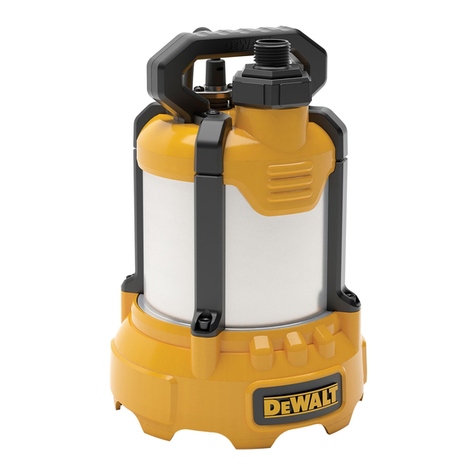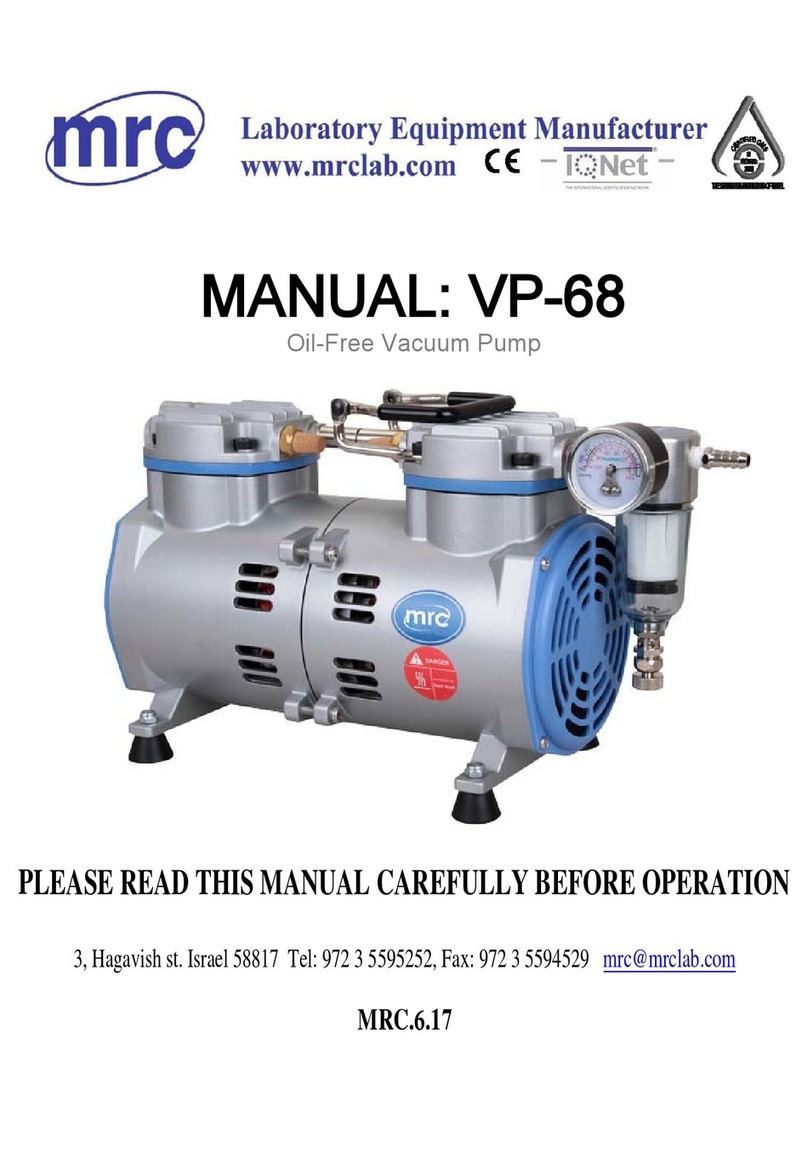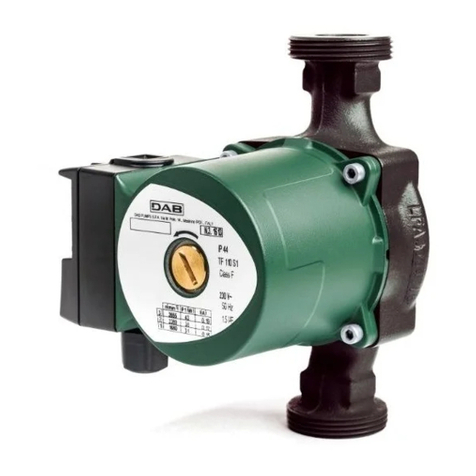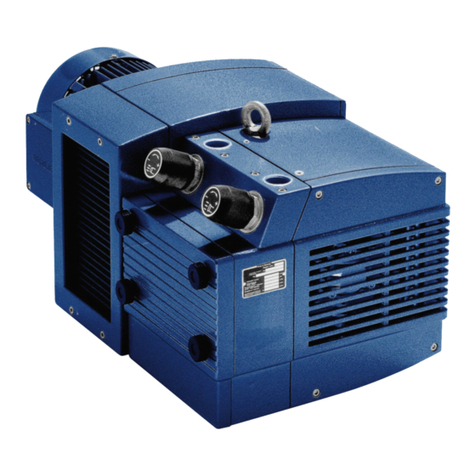
- 18 –
Cont ...
7 TECHNICAL SPECIFICATION
Stuart Turner reserve the right to amend the specification in line with its policy of
continuous development of its products.
*Note: The maximum pressure that can be applied to the pump under any
installation conditions.
Pump Model S1.5 bar Twin
49084
S2.0 bar Twin
49085
S2.0 bar Single
49086
General Guarantee 1 year
WRAS approval 1506334
Approvals WRAS, CE
Features Pump type Centrifugal
Mechanical seal EPDM / Carbon / Al. Oxide
Anti-vibration feet
Inlet strainer(s)
Flexible hoses 4 4 2
Dry run protection
Noise (dB(A)) 53 53 56
Materials Pump body Plastic
Impeller Plastic
Performance Maximum head (closed valve) 1.5 bar
(15 metres)
2.0 bar
(20 metres)
Performance @ 9 l/min 1.0 bar 1.5 bar 1.0 bar
Performance @ 18 l/min 0.7 bar 0.9 bar 0 bar
Maximum flow 32 l/min 35 l/min 18 l/min
Maximum static inlet pressure 10 metres
Maximum working pressure* 300 kPa (3 bar)
Maximum ambient air temperature 40 oC
Min / Max water temperature** Min 4 oC / Max 65 oC
Flow switch sensitivity (approx) 0.8 l/min
Connections Pump connections G ¾ male
Flexible hoses Connections G ¾ female x 15 mm push-in x 185 mm long (inlet)
G ¾ female x 15 mm push-in x 175 mm long (outlet)
Motor Type Series wound, manual reset thermal trip
Duty rating Intermittent (S3) 30 mins on/
30 mins off @ 9 l/min***
Intermittent (S3) 30 mins on/
30 mins off @ 9 l/min
Electrical Power supply / phase / frequency 230 V a.c. / 1 / 50 Hz
Current (full load) 1.2 Amps 1.5 Amps 1.0 Amps
Power consumption 200 Watts 300 Watts 180 Watts
Fuse rating 3 Amps
Power cable (pre-wired) 1.5 metres
Physical Enclosure protection IPX2
Length 250 mm 228 mm
Width 97 mm
Height (excluding hoses) 152 mm
Weight (including fittings) 2.6Kg 2.2Kg
- 7 –
Cont ...
2 LOCATION GENERAL
2.11 Access: For emergencies and maintenance the pump must be
easily accessible.
2.12 Protection: The pump must be located in a dry position, frost
free and protected from freezing, particularly when installed in a
loft (not recommended).
2.13 Ventilation: Ensure an adequate air flow to cool the pump.
Separate the pump from other appliances that generate heat. An
80 mm (3 “) air gap must be maintained around the pump.
2.14 Safety: The motor casing can become very hot under normal
operating conditions. Care must be taken to ensure it cannot be
touched during operation.
2.15 Water retention: Site the pump in a location where in the unlikely
event of a water leak, any spillage is contained or routed to avoid
electrics or areas sensitive to water damage.
2.16 Static inlet pressure: Before deciding where to locate the unit check to
ensure the static inlet head between pump and the bottom of the cold water
tank (Figs. 5 & 6) is at least 0.5 metres and does not exceed the max inlet
head of 10 metres.
2.17 Ambient temperature: The pump must be sited in a location where the
maximum ambient temperature does not exceed 40 oC.
2.18 Pipework: For optimum performance pipework MUST be 22 mm.
Pipework should only reduce to 15 mm when entering terminal fitting.
15 mm pipework can be used but may reduce performance at the terminal
fitting.
2.19 Noise: If supplied the anti-vibration mounting feet and flexible hoses can be
used to reduce noise transmission, however care must be taken when
mounting the pump that any noise is not amplified through loose panels or
pipework. Do not screw down the pump.
2.20 Direction of flow: Ensure the water inlet supply is
connected to the correct pump ports Fig. 2.
2.21 Flexible hoses: Only use the Stuart Turner hose set supplied with the pump.
2.22 Isolating valves: Separate system isolating valves (non restrictive) must be
fitted to allow easy pump service.
Fig. 2




















